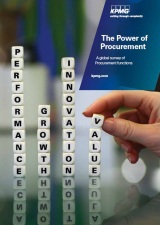More supply chain managers at board level

The function of supply chain management is now represented at board level within over two thirds of all companies. The two factors that most significantly impact the supply chain are customers and costs.
Although there is no concrete data to compare these figures against, researchers at the Cranfield School of Management believe, based on experience, that the number of organisations with a supply chain manager on the board has increased over the past ten years. A recent survey conducted among 181 people revealed that supply chain interests are represented at the highest level within 72 per cent of the organisations concerned. Little has changed, however, in terms of supply chain strategy – the pressure to reduce costs still appears to be the main thrust of the approach. After cost-reduction, reducing the turnaround time and improving the quality are the next most significant driving forces. Despite the survey being conducted in times of recession, a reduction of the working capital and a shortening of the cash-to-cash cycle ranked only fifth and sixth respectively.
In a similar survey conducted by the online community SCM World, the responses were analysed according to level of job function. This study surveyed over 400 executives, 50 of whom were active in the role of chief executive officer or operational officer. Of those 50 people, no less than 52 per cent viewed supply chain management as a means to differentiate from the competition. Only 19 per cent regarded supply chain management as a method of saving costs. The respondents from other levels within the organisation clearly think differently: of the ‘regular’ supply chain managers, 31 per cent viewed their area first and foremost as a way to save costs.
Ever-higher customer expectations, and the increasingly unpredictable nature of them, were named as the key reason for optimising the supply chain. In second place was the growing complexity of the operation, followed by the uncertainty of the market in third place. Cited by no less than two thirds of the supply chain managers, the most common measure being taken – the reduction of stocks – appears somewhat in contradiction to the key reason for supply-chain optimisation. Further steps clearly aimed at saving costs dominated the responses, such as reshaping the supply chain and reducing the size of the workforce.
The key focus areas for supply chain managers:
• Reducing stocks 66%
• Reshaping the supply chain 52%
• More short-term improvements 39%
• Reducing the workforce 31%
• Changing financial agreements with customers and suppliers 32%
Source: SCM World, 2010









